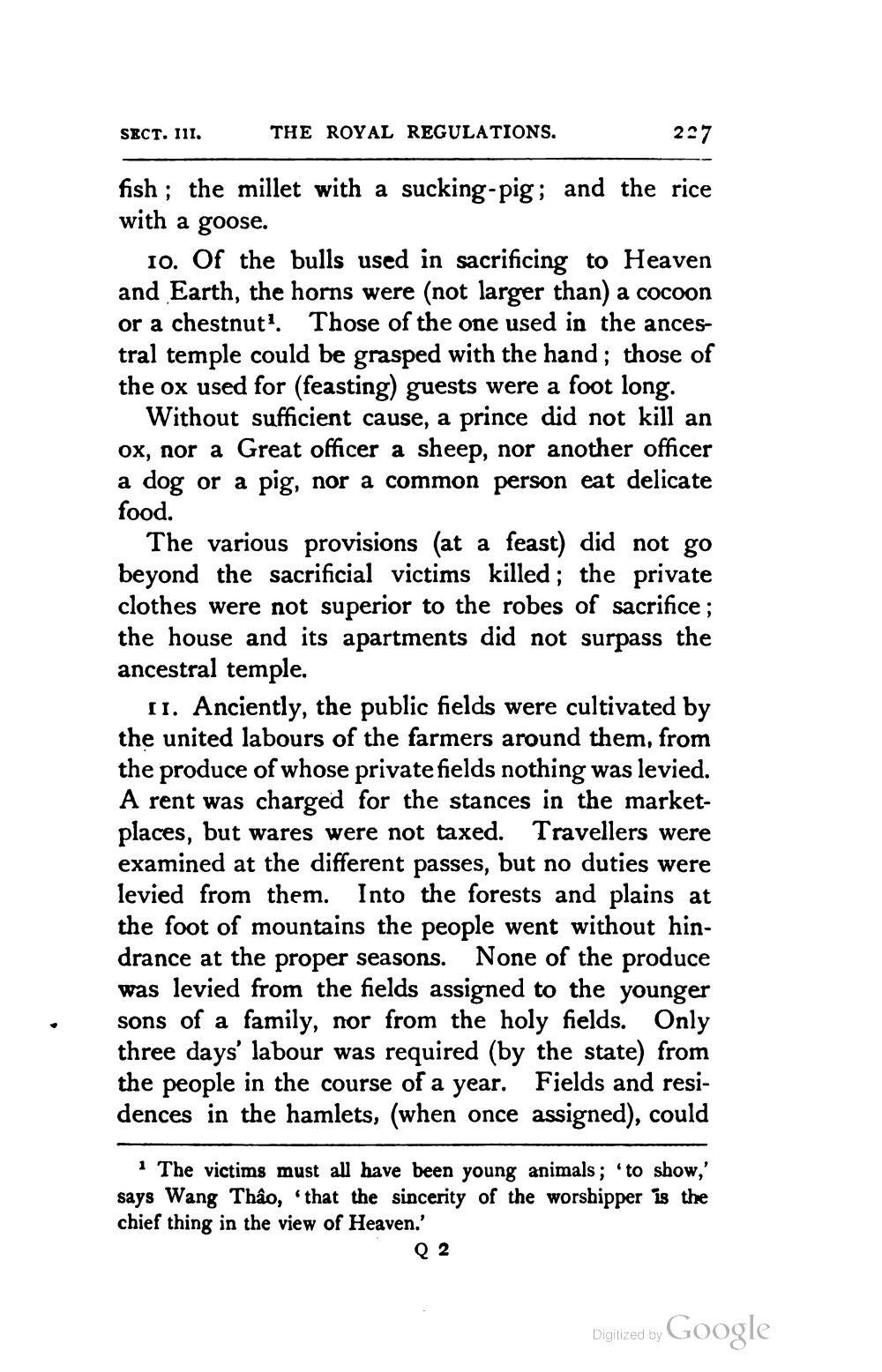________________
SECT. III.
THE ROYAL REGULATIONS.
227
fish; the millet with a sucking-pig; and the rice with a goose.
10. Of the bulls used in sacrificing to Heaven and Earth, the horns were (not larger than) a cocoon or a chestnut. Those of the one used in the ancestral temple could be grasped with the hand; those of the ox used for (feasting) guests were a foot long.
Without sufficient cause, a prince did not kill an ox, nor a Great officer a sheep, nor another officer a dog or a pig, nor a common person eat delicate food.
The various provisions (at a feast) did not go beyond the sacrificial victims killed; the private clothes were not superior to the robes of sacrifice; the house and its apartments did not surpass the ancestral temple.
11. Anciently, the public fields were cultivated by the united labours of the farmers around them, from the produce of whose private fields nothing was levied. A rent was charged for the stances in the marketplaces, but wares were not taxed. Travellers were examined at the different passes, but no duties were levied from them. Into the forests and plains at the foot of mountains the people went without hindrance at the proper seasons. None of the produce was levied from the fields assigned to the younger sons of a family, nor from the holy fields. Only three days' labour was required (by the state) from the people in the course of a year. Fields and residences in the hamlets, (when once assigned), could
1 The victims must all have been young animals; 'to show, says Wang Thảo, that the sincerity of the worshipper is the chief thing in the view of Heaven.'
Q2
Digitized by Google




